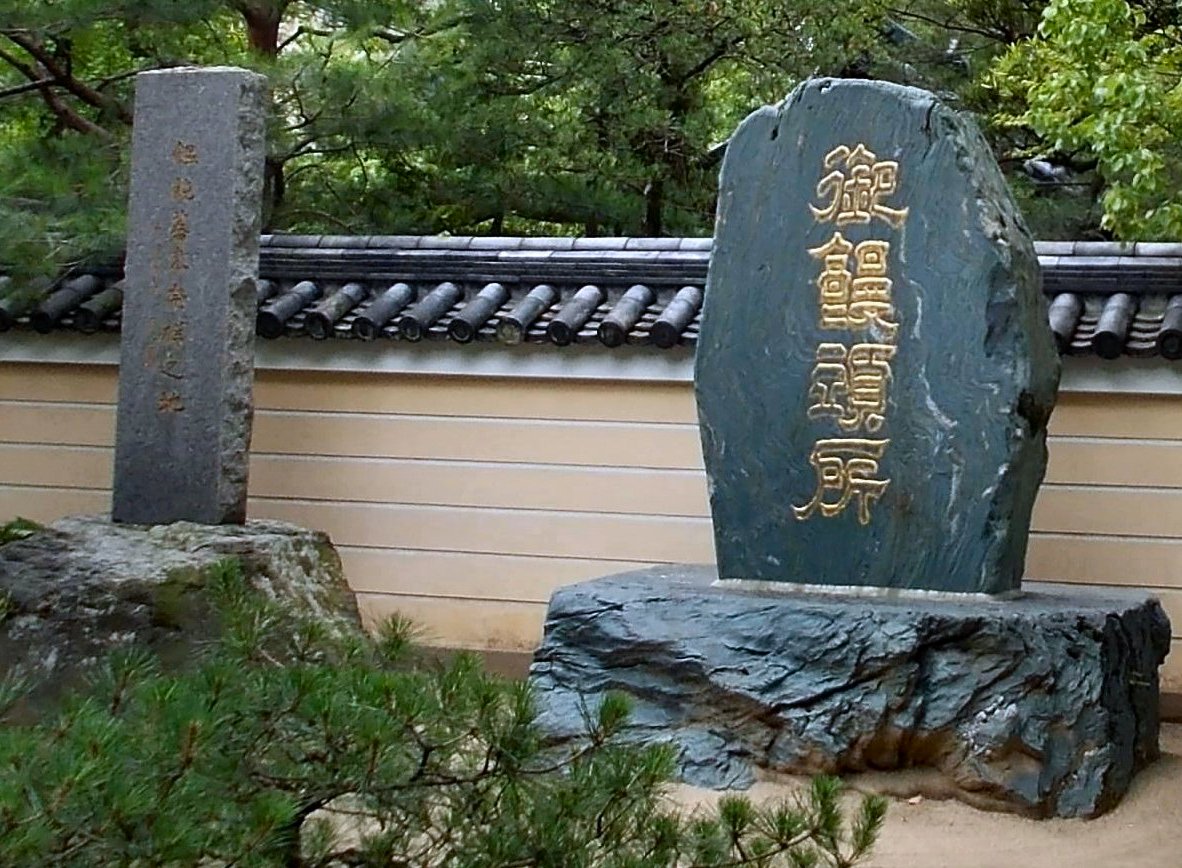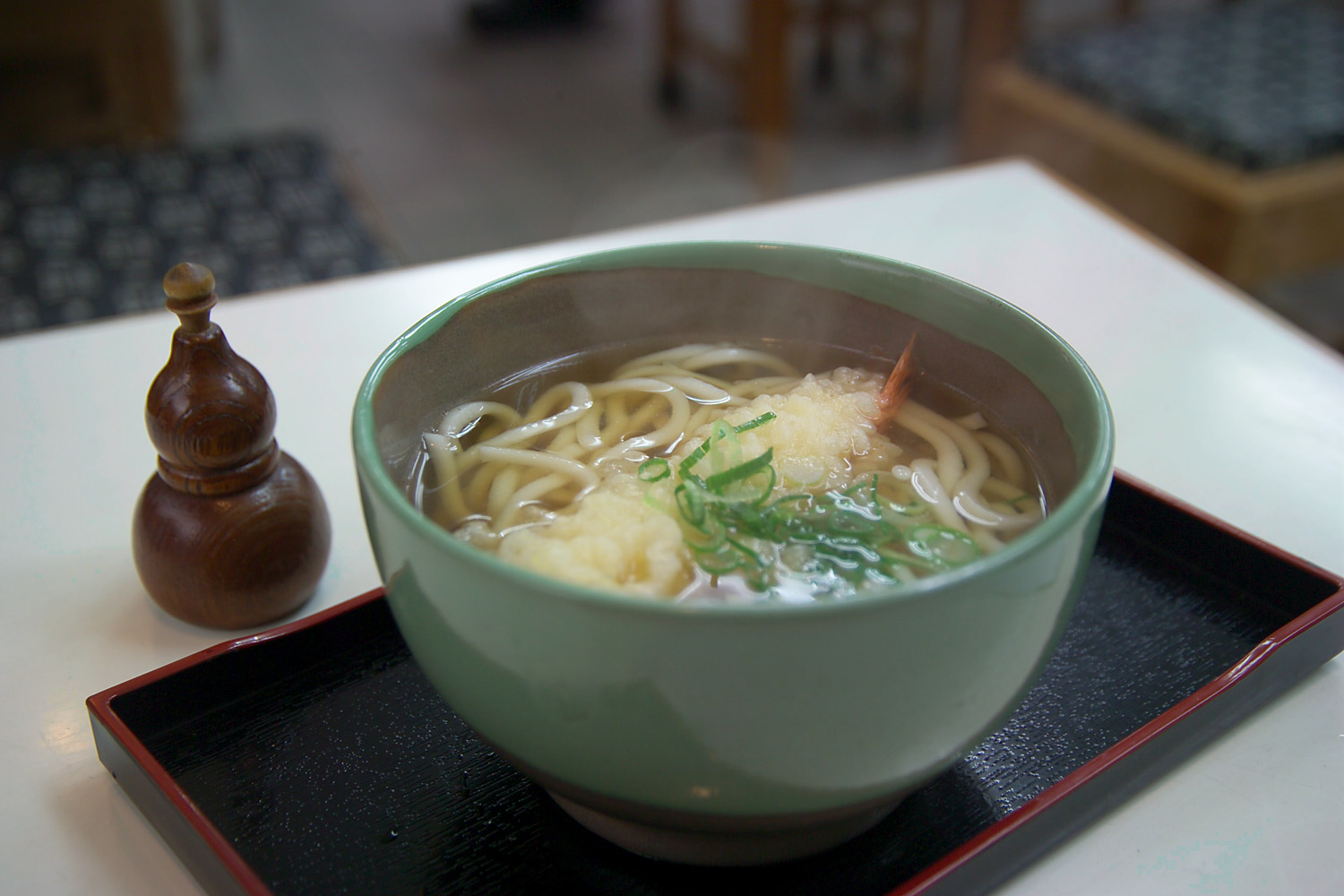|
Kan'ei Great Famine
The Kan'ei Great Famine ( ') was a famine which affected Japan during the reign of Empress Meishō in the Edo period. The estimated number of deaths due to starvation is between 50,000 and 100,000. The famine is generally considered to have begun in 1640 and lasted into 1643. It was named after the Kan'ei era (1624–1644). The ruling ''shōgun'' during the famine was Tokugawa Iemitsu. Events leading to the famine Due to large numbers of internally displaced persons in the aftermath of the Shimabara Rebellion, and the rinderpest epizooty, which broke out in Kyushu in 1638 and was impossible to contain, led to mass deaths of cattle in Western Japan, which reduced agricultural productivity in 1640 due to the scarcity of working animals. Also, motivation among farmers was weakening due to the extreme impoverishment of low-ranking samurai class members. The increased spending after the 1635 reformation of Sankin-kōtai (increasing frequency of ''daimyō'' annual trips to Edo) did not ... [...More Info...] [...Related Items...] OR: [Wikipedia] [Google] [Baidu] |
Empress Meishō
, posthumously honored as , was the 109th monarch of Japan,Imperial Household Agency (''Kunaichō'')明正天皇 (108)/ref> according to the traditional order of succession.Ponsonby-Fane, Richard. (1959). ''The Imperial House of Japan'', p. 115. Her reign lasted from 1629 to 1643. In the history of Japan, Meishō was the seventh of eight women to become empress regnant. The six who reigned before her were Suiko, Kōgyoku/Saimei, Jitō, Genmei, Genshō, and Kōken/Shōtoku. Her sole female successor was Go-Sakuramachi. Genealogy Before Meishō's accession to the Chrysanthemum Throne, her personal name (her ''imina'') was ; and her pre-accession title was . She was the second daughter of Emperor Go-Mizunoo. Her mother was Tokugawa Masako, daughter of the second Tokugawa ''shōgun'', Tokugawa Hidetada and his wife Oeyo. The reign of the new empress was understood to have begun. She was aged 5; and she would grow to become the first woman to occupy the throne since Empress ... [...More Info...] [...Related Items...] OR: [Wikipedia] [Google] [Baidu] |
Shikoku
is the smallest of the List of islands of Japan#Main islands, four main islands of Japan. It is long and between at its widest. It has a population of 3.8 million, the least populated of Japan's four main islands. It is south of Honshu and northeast of Kyushu. Shikoku's ancient names include , , and , and its current name refers to the four former provinces of Japan, provinces that make up the island: Awa Province (Tokushima), Awa, Tosa Province, Tosa, Sanuki Province, Sanuki, and Iyo Province, Iyo. Geography Shikoku Island, comprising Shikoku and its surrounding islands, covers about and consists of four Prefectures of Japan, prefectures: Ehime Prefecture, Ehime, Kagawa Prefecture, Kagawa, Kōchi Prefecture, Kōchi, and Tokushima Prefecture, Tokushima. Across the Seto Inland Sea lie Wakayama Prefecture, Wakayama, Osaka Prefecture, Osaka, Hyōgo Prefecture, Hyōgo, Okayama Prefecture, Okayama, Hiroshima Prefecture, Hiroshima, and Yamaguchi Prefectures on Honshu. To th ... [...More Info...] [...Related Items...] OR: [Wikipedia] [Google] [Baidu] |
Fukushima Prefecture
is a Prefectures of Japan, prefecture of Japan located in the Tōhoku region of Honshu. Fukushima Prefecture has a population of 1,771,100 () and has a geographic area of . Fukushima Prefecture borders Miyagi Prefecture and Yamagata Prefecture to the north, Niigata Prefecture to the west, Gunma Prefecture to the southwest, and Tochigi Prefecture and Ibaraki Prefecture to the south. Fukushima, Fukushima, Fukushima is the capital and Iwaki, Fukushima, Iwaki is the largest city of Fukushima Prefecture, with other major cities including Kōriyama, Aizuwakamatsu, and Sukagawa. Fukushima Prefecture is located on Japan's eastern Pacific coast at the southernmost part of the Tōhoku region, and is home to Lake Inawashiro, the fourth-largest lake in Japan. Fukushima Prefecture is the third-largest prefecture of Japan (after Hokkaido and Iwate Prefecture) and divided by mountain ranges into the three regions of Aizu, Nakadōri, and Hamadōri. History Prehistory The keyhole-shaped Ōya ... [...More Info...] [...Related Items...] OR: [Wikipedia] [Google] [Baidu] |
Aizu
is the westernmost of the three regions of Fukushima Prefecture, Japan, the other two regions being Nakadōri in the central area of the prefecture and Hamadōri in the east. As of October 1, 2010, it had a population of 291,838. The principal city of the area is Aizuwakamatsu. It was part of Mutsu Province; the area once was part of Iwase Province created during the reign of Empress Genshō.Meyners d'Estrey, Guillaume Henry Jean (1884). ; excerpt, '' Genshō crée sept provinces : Idzumi, Noto, Atoa, Iwaki, Iwase, Suwa et Sado en empiétant sur celles de Kawachi, Echizen, Etchū, Kazusa, Mutsu and Shinano'' The ''Yōrō Ritsuryo'' established the Iwase Province in 718 through the division of the Michinoku Province ( Mutsu Province). It was composed of five districts of Shirakawa (白河), Iwase (石背), Aizu (会津), Asaka (安積) and Shinobu (信夫). The area encompassed by the province reverted to Mutsu some time between 722 and 724. During the Edo p ... [...More Info...] [...Related Items...] OR: [Wikipedia] [Google] [Baidu] |
Soba
Soba ( or , "buckwheat") are Japanese noodles made primarily from buckwheat flour, with a small amount of wheat flour mixed in. It has an ashen brown color, and a slightly grainy texture. The noodles are served either chilled with a dipping sauce, or hot in a noodle soup. They are used in a wide variety of dishes. In Japan, soba noodles can be found at fast food venues like to expensive specialty restaurants. Dried soba noodles are sold in stores, along with ''List of Japanese condiments#Mentsuyu, men-tsuyu'', or instant noodle broth, to make home preparation easy. The amino acid balance of the protein in buckwheat, and therefore in soba, is well matched to the needs of humans and can complement the amino acid deficiencies of other staples such as rice and wheat (see protein combining). The tradition of eating soba arose in the Edo period. Etymology The word ''soba'' (蕎麦) means "buckwheat" (''Fagopyrum esculentum''). The full name for buckwheat noodles is ''soba-kiri' ... [...More Info...] [...Related Items...] OR: [Wikipedia] [Google] [Baidu] |
Confection
Confectionery is the art of making confections, or sweet foods. Confections are items that are rich in sugar and carbohydrates, although exact definitions are difficult. In general, however, confections are divided into two broad and somewhat overlapping categories: baker's confections and sugar confections. Baker's confectionery, also called flour confections, includes principally sweet pastries, cakes, and similar baked goods. Baker's confectionery excludes everyday breads, and thus is a subset of products produced by a baker. Sugar confectionery includes candies (also called ''sweets'', short for ''sweetmeats'', in many English-speaking countries), candied nuts, chocolates, chewing gum, bubble gum, pastillage, and other confections that are made primarily of sugar. In some cases, chocolate confections (confections made of chocolate) are treated as a separate category, as are sugar-free versions of sugar confections. The words ''candy'' (Canada and US), ''sweets'' (UK ... [...More Info...] [...Related Items...] OR: [Wikipedia] [Google] [Baidu] |
Manjū
is a traditional Japanese confection, usually a small, dense bun with a sweet filling. They come in many shapes and varieties. The standard manjū has a skin made of flour, and is filled with '' anko'' (sweet azuki bean paste). Some varieties use kudzu starch or buckwheat flour for the skin. Other types of filling include sweet potato, chestnut jam, or custard. Manjū is usually steamed or baked, though fried manjū can be found in some modern restaurants. Traditional manjū are usually round, but many different shapes exist today, and some are proprietary to specific bakeries. History Manju is a traditional Japanese flour-based pastry (instead of rice-based like mochi). During the Kamakura period (1185–1333), Japanese Buddhist monks who studied in the Song dynasty brought the tea culture to Japan, and the custom of eating confections with tea began in Japan. The monks also introduced , a light meal, and the history book mentions , , and as . It is believed that th ... [...More Info...] [...Related Items...] OR: [Wikipedia] [Google] [Baidu] |
Sōmen
, ''somyeon'' (), or ''sùmiàn'' () is a very thin noodle made of wheat flour, less than 1.3 mm in diameter. The noodles are used extensively in East Asian cuisines. Japanese ''sōmen'' is made by stretching the dough with vegetable oil, forming thin strands that are then air dried for later use. This is distinct from a similar thin noodle, ''hiyamugi'', which is knife-cut. In Japan, ''sōmen'' is usually served cold with a light dipping sauce called ''tsuyu''. South Korean ''somyeon'' may be eaten in hot or cold noodle soups. ''Sōmen'' is typically high in sodium. Other names are ''nyūmen'' (煮麺) in Japanese, for a version served warm in soup, and the Chinese name ''guàmiàn'' (), which can be further classified into ''lóngxū'' () for the variant with long and thin strands and ''fèngwei'' () for the variant with flat and broad strands. History The earliest record for what would later be ''sōmen'' dates back to the Tang dynasty in 618-907 China. Around that ti ... [...More Info...] [...Related Items...] OR: [Wikipedia] [Google] [Baidu] |
Wheat Flour
Wheat flour is a powder made from the grinding of common wheat used for human consumption. Wheat varieties are called "soft" or "weak" if gluten content is low, and are called "hard" or "strong" if they have high gluten content. Hard flour, or ''bread flour'', is high in gluten, with 12% to 14% gluten content, and its dough has elastic toughness that holds its shape well once baked. Soft flour is comparatively low in gluten and thus results in a loaf with a finer, crumbly texture. Soft flour is usually divided into cake flour, which is the lowest in gluten, and pastry flour, which has slightly more gluten than cake flour. In terms of the parts of the grain (the grass fruit) used in flour—the endosperm or protein/starchy part, the germ or protein/fat/vitamin-rich part, and the bran or fiber part—there are three general types of flour. White flour is made from the endosperm only. Brown flour includes some of the grain's germ and bran, while whole grain or ''wholemeal flour' ... [...More Info...] [...Related Items...] OR: [Wikipedia] [Google] [Baidu] |
Udon
Udon ( or ) is a thick noodle made from wheat flour, used in Japanese cuisine. There are a variety of ways it is prepared and served. Its simplest form is in a soup as with a mild broth called made from dashi, soy sauce, and mirin. It is usually topped with thinly chopped scallions. Other common toppings include prawn tempura, (mixed tempura fritter), (sweet, deep-fried tofu pouches), (sliced fish cake), and spice added to taste. Standard broth differs by region. Dark soy sauce is added in eastern Japan, while light soy sauce is added in the west. Instant noodles are often sold in two (or more) versions accordingly. More unusual variants include stir-fried and curry udon made with Japanese curry. It is often used in or Japanese hot pot. Dishes Udon noodles are boiled in a pot of hot water. Depending on the type of udon, the way it is served is different as well. Udon noodles are usually served chilled in the summer and hot in the winter. In the Edo period, the thicker ... [...More Info...] [...Related Items...] OR: [Wikipedia] [Google] [Baidu] |
Millet
Millets () are a highly varied group of small-seeded grasses, widely grown around the world as cereal crops or grains for fodder and human food. Most millets belong to the tribe Paniceae. Millets are important crops in the Semi-arid climate, semiarid tropics of Asia and Africa, especially in India, Mali, Nigeria, and Niger, with 97% of production in Developing country, developing countries. The crop is favoured for its Agricultural productivity, productivity and short growing season under hot dry conditions. The millets are sometimes understood to include the widely cultivated sorghum; apart from that, pearl millet is the most commonly cultivated of the millets. Finger millet, proso millet, and foxtail millet are other important crop species. Millets may have been consumed by humans for about 7,000 years and potentially had "a pivotal role in the rise of multi-crop agriculture and settled farming societies". Etymology The word ''millet'' is derived via Old French ''millet, ... [...More Info...] [...Related Items...] OR: [Wikipedia] [Google] [Baidu] |
Sea Of Japan
The Sea of Japan is the marginal sea between the Japanese archipelago, Sakhalin, the Korean Peninsula, and the mainland of the Russian Far East. The Japanese archipelago separates the sea from the Pacific Ocean. Like the Mediterranean Sea, it has almost no tides due to its nearly complete enclosure from the Pacific Ocean. This isolation also affects faunal diversity and salinity, both of which are lower than in the open ocean. The sea has no large islands, bays or capes. Its water balance is mostly determined by the inflow and outflow through the straits connecting it to the neighboring seas and the Pacific Ocean. Few rivers discharge into the sea and their total contribution to the water exchange is within 1%. The seawater has an elevated concentration of Oxygen saturation, dissolved oxygen that results in high biological productivity. Therefore, fishing is the dominant economic activity in the region. The intensity of shipments across the sea has been moderate owing to politi ... [...More Info...] [...Related Items...] OR: [Wikipedia] [Google] [Baidu] |









